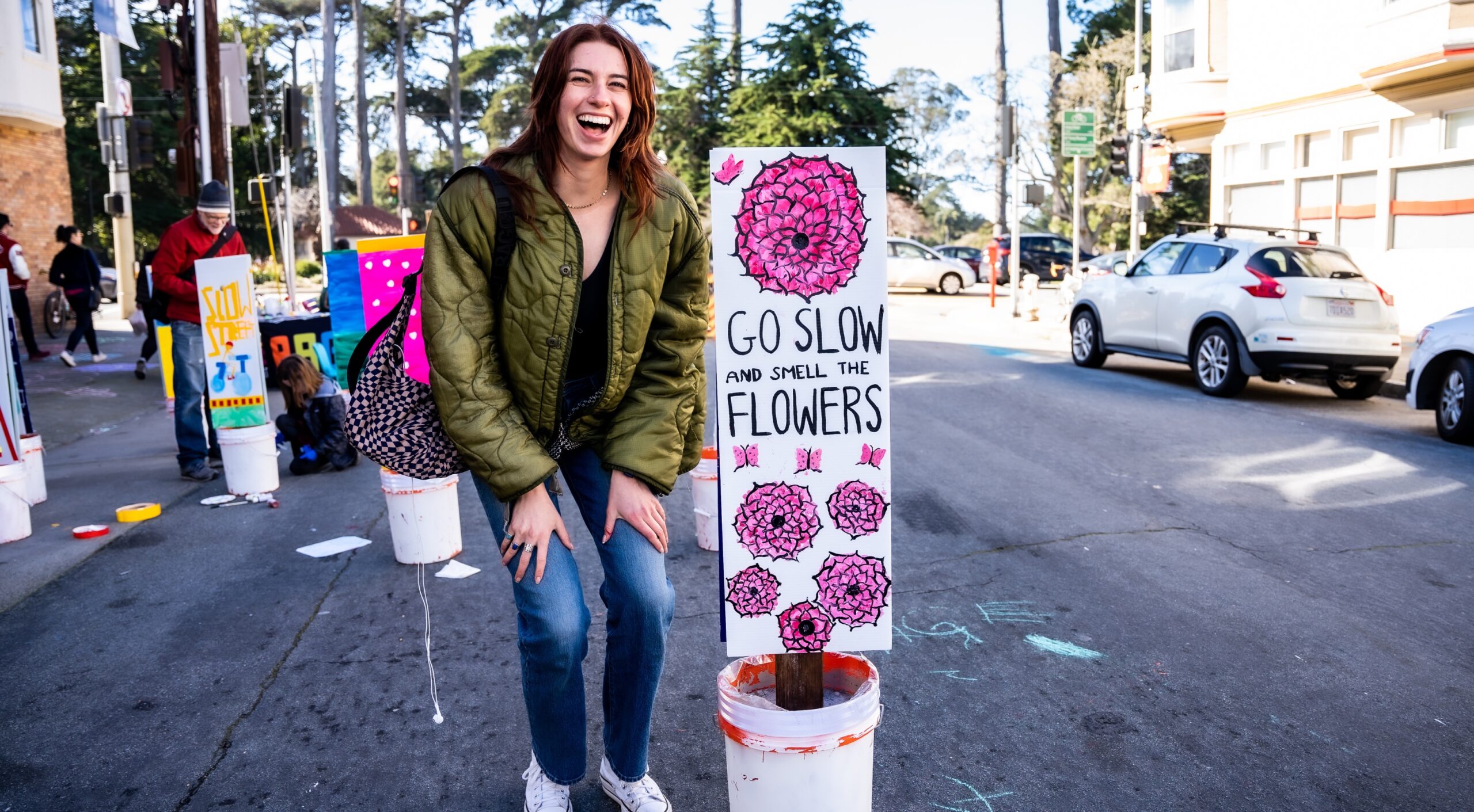In a city where just about any issue can be contentious, it’s good to remind ourselves that there might be more common ground than we thought.
San Francisco’s public spaces became the subject of great debate in the past 12 months. Whether it was JFK Promenade, Slow Streets, or the Great Highway, San Francisco wrestled with what to do with our public spaces as we began to move beyond the pandemic. Should we return to the status quo, or should we treat the public realm like the civic amenity it actually is? San Franciscans overwhelmingly preferred the latter, but the process revealed deep divides between us.
Or did it?
Taking a step back, there is a theme that’s shared by both proponents and opponents on almost all of these issues regarding the future of the public realm: connectivity.
In the simplest terms, connectivity describes our ability to get to where we need to go. Think about all of the places that make up your daily life, like parks, grocery stores, your home, your workplace, and your friend’s apartment. Is getting to those places easy and fast? Or is it difficult, frustrating, and even dangerous? When it comes to changes to the public realm, our opinions are often heavily shaped by these questions. Outside of work and home, our perception of our city and the world we live in is largely based on the experiences we have in public spaces we pass through as we head to our daily destinations.
The joy of comfortably walking, rolling, or jogging along JFK Promenade on the way to nearby neighborhoods speaks to its strong connectivity. The struggles that our neighbors with mobility challenges face when trying to reach their favorite park amenities is an example of poor connectivity. When it comes to Slow Streets, whether we can safely and easily access our parks, schools, and grocery stores or not is a question about links between these places. Are they strong or weak? Slow or fast? Protected or unprotected? Even the issue of traffic on streets adjacent to Slow Streets reveals itself to be about connectivity, as the throughline of these complaints is about how these changes can make a street undesirable or inaccessible.
When you start really listening to what people on both sides are saying, it’s hard not to see our public spaces through the lens of connectivity.
Over the past few years we’ve seen the many benefits of our parks and public spaces, not the least of which are the social health opportunities they provide for our increasingly isolated world. Yet connecting an isolated world through our public spaces means confronting sticky issues like who can access these spaces and how they’re used. It’s important to recognize that this stickiness is unavoidable. Public spaces are just that: public. They’re one of our few truly shared amenities, and sharing them fairly across a deeply diverse and often inequitable landscape is inherently difficult. How can we emerge from the fog of competing wants and needs?
The Slow Streets program has begun to reveal a few solutions. Over the past few years, SF Parks Alliance has become deeply involved in Slow Streets, where linear parkways have started to emerge from the pavement. Similar to our work with Street Parks, Slow Streets show what’s possible when we treat roadways like a public amenity rather than a thoroughfare. The result? Neighbors embrace these spaces and are eager to care for them, improve them, and build community among them, making for a more useful and enjoyable public realm.
To help reimagine the roadway, we’ve raised more than $250,000 in support of community projects along Slow Streets. We helped author a community-driven plan to support and expand Slow Streets across San Francisco, as well as SPUR’s Temporary to Transformative report, which examines the impact of Slow Streets and Shared Spaces, and we began to imagine their future. We started working with our amazing Community Partners at Page Slow Street, and helped create playbooks, toolkits, op-eds, maps, and more in support of these new public spaces.
Through all of this, we’ve been reminded that neighbors are often the best stewards of their spaces. They are the experts. They know what’s working and what’s broken, who’s engaged and who’s absent, and how to connect the dots to make these public spaces even more successful. They reinforced the idea that connectivity is key to our happiness and well-being, and by extension, so too are our public spaces. Just the other day, we stumbled upon a pizza party in what was once a parking space, as our friends at Page Slow Street shared slices with their neighbors.
In short, connectivity is key. Occasionally, it’s even delicious.
With 2023 stretching out before us, we’re continuing our work to ensure greater empowerment of our community stewards, more creativity from our city partners, more empathy for our neighbors, and through all of that, more pathways to a better and more connected public realm.

